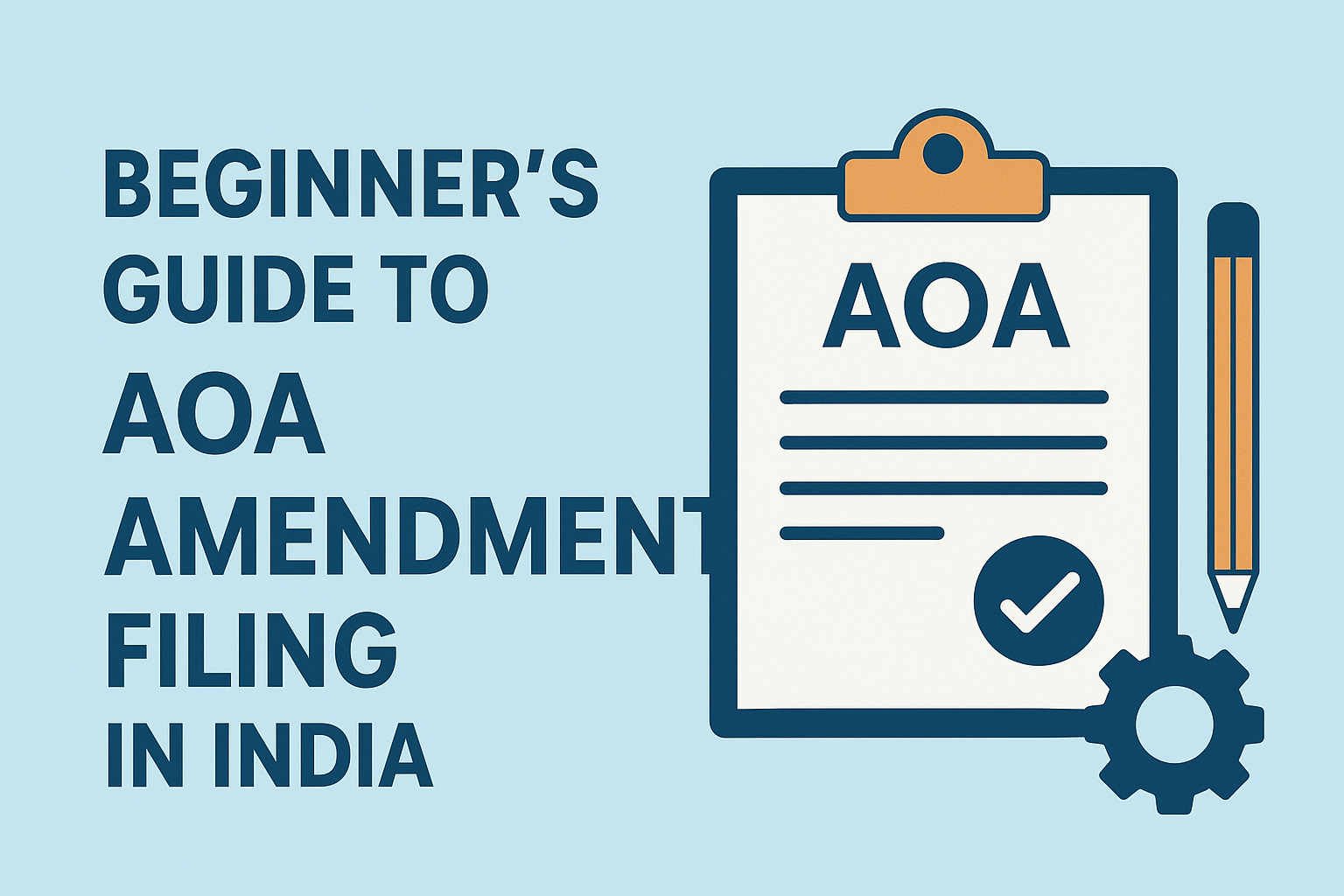Beginner's Guide to AOA Amendment Filing in India: Step-by-Step Process and Essential Insights
Introduction
The Articles of Association (AOA) are the backbone of a company's internal rules and governance in India. They set the framework for how a company operates, outlining rights, responsibilities, and procedures. As companies grow or change direction, they may need to amend these rules.
When and why does this happen? Whether expanding business activities, changing director roles, or updating internal policies, companies must keep their AOA aligned with current laws and strategies.
India’s legal environment, primarily governed by the Companies Act, 2013, lays clear rules for amending these documents. This guide aims to simplify the process for beginners, providing a step-by-step approach to filing AOA amendments successfully.
Understanding the Articles of Association (AOA) and Its Role in Company Law
What is the AOA?
The AOA acts like a company's rulebook. It explains how the company is run, from shareholder meetings to appointment of directors, and voting procedures. Its main purpose is to ensure clarity and smooth functioning.
While the MoA (Memorandum of Association) is like a company’s birth certificate, the AOA is the operational manual. The MoA states the company’s main objectives, but the AOA details how those objectives will be achieved in daily operations.
Importance of the AOA
An accurate AOA keeps everyone on the same page. It controls who has voting rights, how meetings are held, and how decisions are made. It also protects stakeholders’ rights and defines internal procedures.
Common reasons for AOA amendments
Companies often choose to amend their AOA when faced with:
- New business directions or activities
- Changes in shareholding or director roles
- Regulatory updates or compliance needs
- Strategic restructuring or mergers
Legal Framework and Conditions for AOA Amendment in India
Relevant provisions under the Companies Act, 2013
Section 15 of the Act covers modifications to the AOA, allowing companies to alter its rules as needed. The MCA (Ministry of Corporate Affairs) also issues rules that guide the amendment process and required filings.
Conditions for valid AOA amendments
Before they can change their AOA, companies need shareholder approval. This is usually through a special resolution passed during an EGM. The board must approve the amendments, and all steps must comply with the law.
Limitations and restrictions
Some amendments might not be permitted if they violate existing laws or affect public interests. In certain cases, courts may need to approve amendments if disputes arise or if restrictions exist.
Step-by-Step Process for Filing AOA Amendment in India
Preparing the proposed amendments
Start by drafting clear amendments. Based on the changes needed, prepare a resolution which states what parts of the AOA will be altered. It’s wise to consult a legal or company secretarial expert to ensure accuracy.
Convening a Board Meeting
Notify directors of the upcoming board meeting. Present the draft amendments and seek approval. Record this approval through a formal resolution, which becomes part of the company’s official records.
Shareholder approval
Next, call an EGM (Extraordinary General Meeting). Shareholders vote on the proposed amendments. A special resolution generally requires at least 75% approval, depending on company rules.
Filing with the Registrar of Companies (RoC)
File the necessary documents with the MCA portal:
- Amended AOA copy
- Minutes of the EGM
- Special resolution
- Form MGT-7 (annual return) Pay applicable fees and submit all documents online.
Obtaining the Certificate of Incorporation of AOA Amendment
The RoC then reviews the submission. If everything checks out, a certificate confirming the AOA amendment is issued. This certificate officially updates the company’s records.
Key Documents and Compliance Checklist
Essential documents for AOA amendment filing
- The amended Articles of Association
- Board resolution approving change
- Shareholders' special resolution
- Notice and minutes of the EGM
- Form MGT-7 (annual return documentation)
Common pitfalls and how to avoid them
Mistakes often happen with incomplete paperwork or skipping procedural steps. Ensure all resolutions are properly drafted, approvals are obtained, and documentation matches statutory requirements. Double-check for errors before filing.
Real-World Examples and Case Studies
Example of a company successfully filing AOA amendments
A small tech startup wanted to add new business activities. They drafted amendments, got board approval, held an EGM, and obtained shareholder support. After filing the documents correctly, the RoC issued the compliance certificate without delay.
Lessons learned from notable cases
In a recent case, a company failed to obtain proper shareholder approval, leading to legal disputes. This highlights the importance of following proper procedures and consulting experts to avoid delays.
Expert Tips and Best Practices for AOA Amendment Filing
- Review your existing AOA thoroughly before making changes.
- Hire qualified legal or company secretarial professionals for guidance.
- Keep shareholders informed and involved throughout the process.
- Maintain detailed records of all approvals and resolutions.
- Update your AOA periodically to reflect current practices and laws.
- Use technology tools to streamline filings and compliance checks.
Conclusion
Amending your company’s AOA is a crucial task that ensures your business stays compliant and adaptable. Following the correct process not only avoids legal hassles but also supports strategic growth.
Always remember, proper planning and expert guidance make this process smoother. Keep yourself informed about changes in company law to prevent surprises. The key is to act proactively—plan amendments, consult professionals, and stay compliant for a hassle-free experience.
Key Takeaways
- The legal foundation for AOA amendments comes from the Companies Act, 2013.
- Follow a structured process: drafting, approval, filing, and certification.
- Accurate documentation and procedural compliance are essential.
- Professional advice can save time, money, and headaches.
Take control of your company’s future—start planning your AOA amendments today and ensure your business operates smoothly and lawfully.
